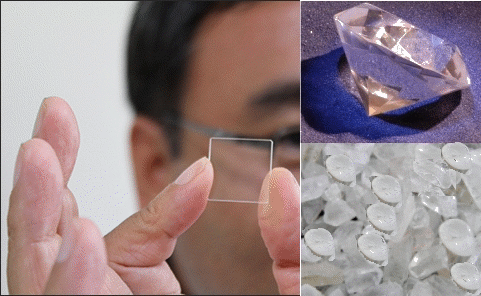 All types of Solids
Glass – Amorphous; Diamond – Crystalline; Quartz – Poly crystalline
All types of Solids
Glass – Amorphous; Diamond – Crystalline; Quartz – Poly crystalline
Particles in a solid are tightly packed, usually in a regular pattern. They vibrate (jiggle) but generally do not move from place to place.
In general they retain a fixed volume and shape. They are not easily compressible. They do not flow easily. Liquids and solids are often referred to as condensed phases because the particles are very close together.
The atoms, molecules or ions which make up a solid may be arranged in an orderly repeating pattern, or irregularly. Materials whose constituents are arranged in a regular pattern are known as crystals. In some cases, the regular ordering can continue unbroken over a large scale. Solid objects that are large enough to see and handle are rarely composed of a single crystal, but instead are made of a large number of single crystals, known as crystallites, whose size can vary from a few nanometers to several meters. Such materials are called polycrystalline. Almost all common metals, and many ceramics, are polycrystalline. In solids, there is no long–range order in the position of the atoms. These solids are known as amorphous solids; examples include polystyrene and glass.
On the other hand the solid which loses shape on long standing, flows under its own weight and is easily distorted by even mild distortion force is called pseudo solid e. g. glass, pith etc.